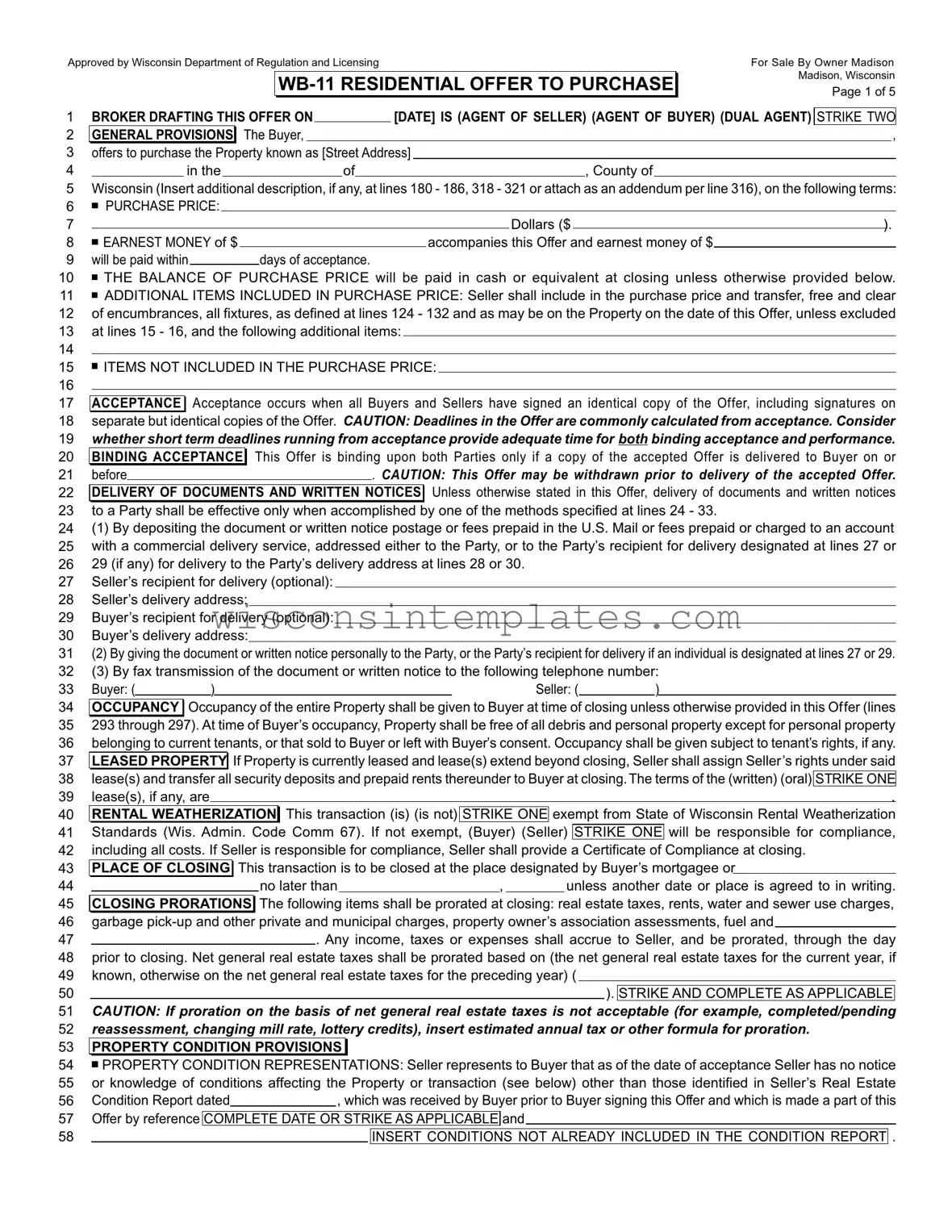Fill Out Your Wisconsin Wb11 Template
The Wisconsin WB-11 Form is a standardized document used for real estate transactions, specifically for making offers to purchase residential properties in Wisconsin. This form outlines essential terms and conditions, including the purchase price, earnest money, and various contingencies that protect both buyers and sellers. Understanding its provisions is crucial for anyone involved in a real estate transaction to ensure compliance and safeguard their interests.
Launch Editor Now
